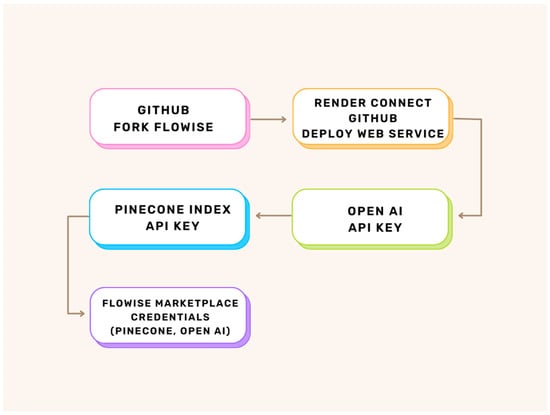Journal Description
Publications
Publications
is an international, peer-reviewed, open access journal on scholarly publishing, published quarterly online by MDPI.
- Open Access— free for readers, with article processing charges (APC) paid by authors or their institutions.
- High Visibility: indexed within Scopus, ESCI (Web of Science), RePEc, dblp, and other databases.
- Journal Rank: CiteScore - Q1 (Communication)
- Open Peer-Review: authors have the option for all reviewer comments and editorial decisions to be published along with the final paper. For more, see: Editorial, Paper with Review Comments.
- Rapid Publication: manuscripts are peer-reviewed and a first decision is provided to authors approximately 35 days after submission; acceptance to publication is undertaken in 3.4 days (median values for papers published in this journal in the second half of 2023).
- Recognition of Reviewers: reviewers who provide timely, thorough peer-review reports receive vouchers entitling them to a discount on the APC of their next publication in any MDPI journal, in appreciation of the work done.
Impact Factor:
3.8 (2022)
Latest Articles
Application of ChatGPT in Information Literacy Instructional Design
Publications 2024, 12(2), 11; https://0-doi-org.brum.beds.ac.uk/10.3390/publications12020011 - 15 Apr 2024
Abstract
Recent developments in generative artificial intelligence tools have prompted immediate reactions in the academic library community. While most studies focus on the potential impact on academic integrity, this work explored constructive applications of ChatGPT in the design of instructional materials for courses in
[...] Read more.
Recent developments in generative artificial intelligence tools have prompted immediate reactions in the academic library community. While most studies focus on the potential impact on academic integrity, this work explored constructive applications of ChatGPT in the design of instructional materials for courses in academic information literacy. The starting point was the use of openly licenced information resources or content infrastructure as facilitators in the creation of educational materials. In the first phase, course teaching material was developed using a prompt engineering strategy, predefined standards, and a prompt script. As a second step, we experimented with designing a custom chatbot model connected to a pre-defined corpus of source documents. The results demonstrated that the final teaching material required careful revision and optimisation before use in an actual instructional programme. The experimental design of the custom chatbot was able to query specific user-defined documents. Taken together, these findings suggest that the strategic and well-planned use of ChatGPT technology in content creation can have substantial benefits in terms of time and cost efficiency. In the context of information literacy, the results provide a practical and innovative solution to integrate the new technology tool into instructional practices.
Full article
(This article belongs to the Special Issue 10th Anniversary Special Issue "PUBMET2023 Conference on Scholarly Communication in the Context of Open Science")
►
Show Figures
Open AccessArticle
In-Depth Examination of Coverage Duration: Analyzing Years Covered and Skipped in Journal Indexing
by
Eungi Kim
Publications 2024, 12(2), 10; https://0-doi-org.brum.beds.ac.uk/10.3390/publications12020010 - 01 Apr 2024
Abstract
►▼
Show Figures
Journals that have consistently maintained uninterrupted indexing over an extended period can be assumed to possess stability and sustainability in journal indexing. Building on this assumption, the objective of this study is to scrutinize the years omitted in the indexing of Scopus-indexed journals.
[...] Read more.
Journals that have consistently maintained uninterrupted indexing over an extended period can be assumed to possess stability and sustainability in journal indexing. Building on this assumption, the objective of this study is to scrutinize the years omitted in the indexing of Scopus-indexed journals. To conduct this study, three coverage duration indicators—nyears-covered (total years covered), nyears-skipped (years skipped), and skipped/covered ratio (proportion of years skipped to total years covered)—were formulated. Data from SCImago Journal Rank (SJR) for 2022, consisting of 16,762 records (62% of downloaded data) with a coverage duration of 25 years or less, were used for this study. The results revealed that around 10% of Scopus-indexed journals experienced exclusions or coverage gaps. Longer coverage correlates positively with documents published, h-index, and citations, while skipped years decrease with these indicators. Open access (OA) journals exhibited a lower skipped/covered ratio than non-OA journals, suggesting a better sustainability of indexing than non-OA journals. Disciplinary differences in Scopus journal coverage duration revealed notable variation, suggesting that coverage duration indicators can be effectively used to evaluate journal stability within Scopus. Overall, the coverage gaps reflect Scopus’s efforts to regulate the journals it indexes. The coverage duration indicators proposed in this study can be applied to assess the stability of periodicals in any database, providing insights into the broader dynamics and quality standards maintained by a database, where the database periodically adds and removes its indexed contents.
Full article
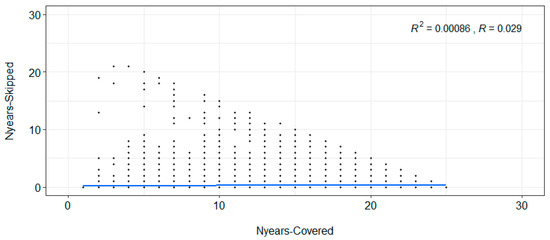
Figure 1
Open AccessArticle
Bibliometric Overview of ChatGPT: New Perspectives in Social Sciences
by
Marian Oliński, Krzysztof Krukowski and Kacper Sieciński
Publications 2024, 12(1), 9; https://0-doi-org.brum.beds.ac.uk/10.3390/publications12010009 - 21 Mar 2024
Abstract
►▼
Show Figures
This study delves into a bibliometric analysis of ChatGPT, an AI tool adept at analysing and generating text, highlighting its influence in the realm of social sciences. By harnessing data from the Scopus database, a total of 814 relevant publications were selected and
[...] Read more.
This study delves into a bibliometric analysis of ChatGPT, an AI tool adept at analysing and generating text, highlighting its influence in the realm of social sciences. By harnessing data from the Scopus database, a total of 814 relevant publications were selected and scrutinised through VOSviewer, focusing on elements such as co-citations, keywords and international collaborations. The objective is to unearth prevailing trends and knowledge gaps in scholarly discourse regarding ChatGPT’s application in social sciences. Concentrating on articles from the year 2023, this analysis underscores the rapid evolution of this research domain, reflecting the ongoing digital transformation of society. This study presents a broad thematic picture of the analysed works, indicating a diversity of perspectives—from ethical and technological to sociological—regarding the implementation of ChatGPT in the fields of social sciences. This reveals an interest in various aspects of using ChatGPT, which may suggest a certain openness of the educational sector to adopting new technologies in the teaching process. These observations make a contribution to the field of social sciences, suggesting potential directions for future research, policy or practice, especially in less represented areas such as the socio-legal implications of AI, advocating for a multidisciplinary approach.
Full article

Figure 1
Open AccessReview
Benefits of Citizen Science for Libraries
by
Dolores Mumelaš and Alisa Martek
Publications 2024, 12(1), 8; https://0-doi-org.brum.beds.ac.uk/10.3390/publications12010008 - 08 Mar 2024
Abstract
Participating in collaborative scientific research through citizen science, a component of open science, holds significance for both citizen scientists and professional researchers. Yet, the advantages for those orchestrating citizen science initiatives are often overlooked. Organizers encompass a diverse range, including governmental entities, non-governmental
[...] Read more.
Participating in collaborative scientific research through citizen science, a component of open science, holds significance for both citizen scientists and professional researchers. Yet, the advantages for those orchestrating citizen science initiatives are often overlooked. Organizers encompass a diverse range, including governmental entities, non-governmental organizations, corporations, universities, and institutions like libraries. For libraries, citizen science holds importance by fostering heightened civic and research interests, promoting scientific publishing, and contributing to overall scientific progress. This paper aims to provide a comprehensive understanding of the specific ways in which citizen science can benefit libraries and how libraries can effectively utilize citizen science to achieve their goals. The paper is based on a systematic review of peer-reviewed articles that discuss the direct benefits of citizen science on libraries. A list of the main benefits of citizen science for libraries has been compiled from the literature. Additionally, the reasons why it is crucial for libraries to communicate the benefits of citizen science for their operations have been highlighted, particularly in terms of encouraging other libraries to actively engage in citizen science projects.
Full article
(This article belongs to the Special Issue 10th Anniversary Special Issue "PUBMET2023 Conference on Scholarly Communication in the Context of Open Science")
►▼
Show Figures
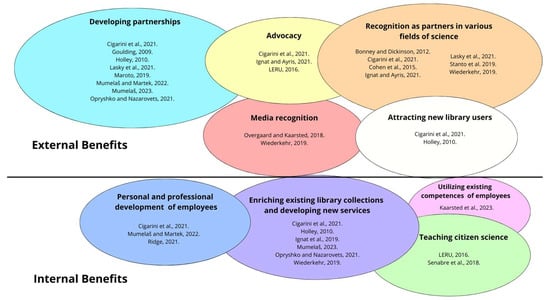
Figure 1
Open AccessOpinion
Should I Buy the Current Narrative about Predatory Journals? Facts and Insights from the Brazilian Scenario
by
Cicero Cena, Daniel A. Gonçalves and Giuseppe A. Câmara
Publications 2024, 12(1), 7; https://0-doi-org.brum.beds.ac.uk/10.3390/publications12010007 - 06 Mar 2024
Abstract
►▼
Show Figures
The burgeoning landscape of scientific communication, marked by an explosive surge in published articles, journals, and specialized publishers, prompts a critical examination of prevailing assumptions. This article advocates a dispassionate and meticulous analysis to avoid policy decisions grounded in anecdotal evidence or superficial
[...] Read more.
The burgeoning landscape of scientific communication, marked by an explosive surge in published articles, journals, and specialized publishers, prompts a critical examination of prevailing assumptions. This article advocates a dispassionate and meticulous analysis to avoid policy decisions grounded in anecdotal evidence or superficial arguments. The discourse surrounding so-called predatory journals has been a focal point within the academic community, with concerns ranging from alleged lack of peer review rigor to exorbitant publication fees. While the consensus often leans towards avoiding such journals, this article challenges the prevailing narrative. It calls for a more nuanced understanding of what constitutes predatory practices and underscores the importance of skeptical inquiry within our daily academic activities. The authors aim to dispel misconceptions and foster a more informed dialogue by scrutinizing APCs, impact factors, and retractions. Furthermore, the authors delve into the evolving landscape of scientific publishing, addressing the generational shifts and emerging trends that challenge traditional notions of prestige and impact. In conclusion, this article serves as a call to action for the scientific community to engage in a comprehensive and nuanced debate on the complex issues surrounding scientific publishing.
Full article
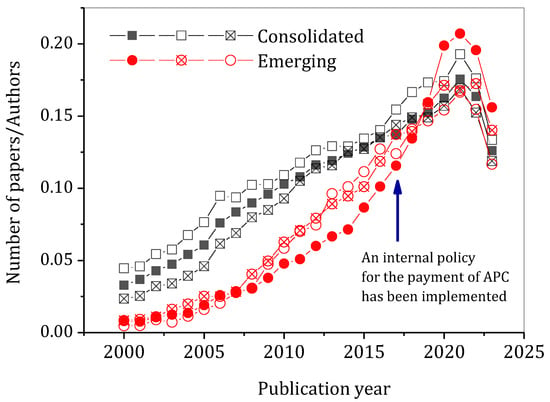
Figure 1
Open AccessFeature PaperArticle
FAIRness of Research Data in the European Humanities Landscape
by
Ljiljana Poljak Bilić and Kristina Posavec
Publications 2024, 12(1), 6; https://0-doi-org.brum.beds.ac.uk/10.3390/publications12010006 - 05 Mar 2024
Abstract
This paper explores the landscape of research data in the humanities in the European context, delving into their diversity and the challenges of defining and sharing them. It investigates three aspects: the types of data in the humanities, their representation in repositories, and
[...] Read more.
This paper explores the landscape of research data in the humanities in the European context, delving into their diversity and the challenges of defining and sharing them. It investigates three aspects: the types of data in the humanities, their representation in repositories, and their alignment with the FAIR principles (Findable, Accessible, Interoperable, Reusable). By reviewing datasets in repositories, this research determines the dominant data types, their openness, licensing, and compliance with the FAIR principles. This research provides important insight into the heterogeneous nature of humanities data, their representation in the repository, and their alignment with FAIR principles, highlighting the need for improved accessibility and reusability to improve the overall quality and utility of humanities research data.
Full article
(This article belongs to the Special Issue 10th Anniversary Special Issue "PUBMET2023 Conference on Scholarly Communication in the Context of Open Science")
►▼
Show Figures

Figure 1
Open AccessArticle
Reducing the Matthew Effect on Journal Citations through an Inclusive Indexing Logic: The Brazilian Spell (Scientific Periodicals Electronic Library) Experience
by
Luciano Rossoni and Rodrigo Assunção Rosa
Publications 2024, 12(1), 5; https://0-doi-org.brum.beds.ac.uk/10.3390/publications12010005 - 18 Feb 2024
Abstract
►▼
Show Figures
The inclusion of scientific journals in prestigious indexers is often associated with higher citation rates; journals included in such indexers are significantly more acknowledged than those that are not included in them. This phenomenon refers to the Matthew effect on journal citations, according
[...] Read more.
The inclusion of scientific journals in prestigious indexers is often associated with higher citation rates; journals included in such indexers are significantly more acknowledged than those that are not included in them. This phenomenon refers to the Matthew effect on journal citations, according to which journals in exclusive rankings tend to be increasingly cited. This paper shows the opposite: that the inclusion of journals in local indexers ruled by inclusive logic reduces the Matthew effect on journal citations since it enables them to be equally exposed. Thus, we based our arguments on the comparison of 68 Brazilian journals before and after they were indexed in the Scientific Periodicals Electronic Library (Spell), which ranks journals in the Brazilian management field based on local citations. Citation impact indicators and iGini (a new individual inequality analysis measure) were used to show that the inclusion of journals in Spell has probably increased their impact factor and decreased their citation inequality rates. Using a difference-in-differences model with continuous treatment, the results indicated that the effect between ranking and inequality declined after journals were included in Spell. Additional robustness checks through event study models and interrupted time-series analysis for panel data point to a reduction in citation inequality but follow different trajectories for the 2- and 5-year impact. The results indicate that the indexer has reduced the Matthew effect on journal citations.
Full article

Figure 1
Open AccessArticle
Does Quality Matter? Quality Assurance in Research for the Chilean Higher Education System
by
Elizabeth Troncoso, Daniel A. López, René Ruby-Figueroa, Dieter Koch and Ricardo Reich
Publications 2024, 12(1), 4; https://0-doi-org.brum.beds.ac.uk/10.3390/publications12010004 - 05 Feb 2024
Abstract
►▼
Show Figures
This study analyzes the research quality assurance processes in Chilean universities. Data from 29 universities accredited by the National Accreditation Commission were collected. The relationship between institutional accreditation and research performance was analyzed using length in years of institutional accreditation and eight research
[...] Read more.
This study analyzes the research quality assurance processes in Chilean universities. Data from 29 universities accredited by the National Accreditation Commission were collected. The relationship between institutional accreditation and research performance was analyzed using length in years of institutional accreditation and eight research metrics used as the indicators of quantity, quality, and impact of a university’s outputs at an international level. The results showed that quality assurance in research of Chilean universities is mainly associated with quantity and not with the quality and impact of academic publications. There was also no relationship between the number of publications and their quality, even finding cases with negative correlations. In addition to the above, the relationship between international metrics to evaluate research performance (i.e., international collaboration, field-weighted citation impact, and output in the top 10% citation percentiles) showed the existence of three clusters of heterogeneous composition regarding the distribution of universities with different years of institutional accreditation. These findings call for a new focus on improving regulatory processes to evaluate research performance and adequately promote institutions’ development and the effectiveness of their mission.
Full article
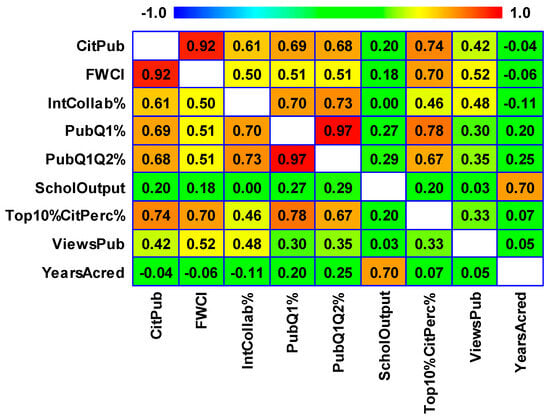
Figure 1
Open AccessArticle
Mining and Mineral Processing Journals in the WoS and Their Rankings When Merging SCIEx and ESCI Databases—Case Study Based on the JCR 2022 Data
by
Tomislav Korman, Tomislav Malvić, Vasyl Lozynskyi, Zlatko Briševac, Zoran Kovač, Lidia Hrnčević and Krešimir Pavlić
Publications 2024, 12(1), 3; https://0-doi-org.brum.beds.ac.uk/10.3390/publications12010003 - 19 Jan 2024
Abstract
►▼
Show Figures
The 2022 JCR included ESCI journals for the first time, increasing the number of publication titles by approximately 60%. In this paper, the subcategory Mining and Mineral Processing (part of the Engineering and Geosciences category, where 12 of the ESCI journals were merged
[...] Read more.
The 2022 JCR included ESCI journals for the first time, increasing the number of publication titles by approximately 60%. In this paper, the subcategory Mining and Mineral Processing (part of the Engineering and Geosciences category, where 12 of the ESCI journals were merged with the 20 SCIEx ones) is presented and analyzed. Only three of the ESCI journals included in the database were ranked Q1/Q2. The inclusion of the entire ESCI added new content for readers and authors relying on JCR sources. This paper offers authors, researchers, and publishers in the Mining and Mineral Processing field practical insights into the potential benefits and challenges associated with the changing landscape of indexed journals, as well as in-depth, systematic analyses that provide potential authors with the opportunity to select the most suitable journal for submitting their papers.
Full article

Figure 1
Open AccessArticle
Tracing the Evolution of Reviews and Research Articles in the Biomedical Literature: A Multi-Dimensional Analysis of Abstracts
by
Stefano Guizzardi, Maria Teresa Colangelo, Prisco Mirandola and Carlo Galli
Publications 2024, 12(1), 2; https://0-doi-org.brum.beds.ac.uk/10.3390/publications12010002 - 12 Jan 2024
Abstract
►▼
Show Figures
We previously examined the diachronic shifts in the narrative structure of research articles (RAs) and review manuscripts using abstract corpora from MEDLINE. This study employs Nini’s Multidimensional Analysis Tagger (MAT) on the same datasets to explore five linguistic dimensions (D1–5) in these two
[...] Read more.
We previously examined the diachronic shifts in the narrative structure of research articles (RAs) and review manuscripts using abstract corpora from MEDLINE. This study employs Nini’s Multidimensional Analysis Tagger (MAT) on the same datasets to explore five linguistic dimensions (D1–5) in these two sub-genres of biomedical literature, offering insights into evolving writing practices over 30 years. Analyzing a sample exceeding 1.2 million abstracts, we observe a shared reinforcement of an informational, emotionally detached tone (D1) in both RAs and reviews. Additionally, there is a gradual departure from narrative devices (D2), coupled with an increase in context-independent content (D3). Both RAs and reviews maintain low levels of overt persuasion (D4) while shifting focus from abstract content to emphasize author agency and identity. A comparison of linguistic features underlying these dimensions reveals often independent changes in RAs and reviews, with both tending to converge toward standardized stylistic norms.
Full article
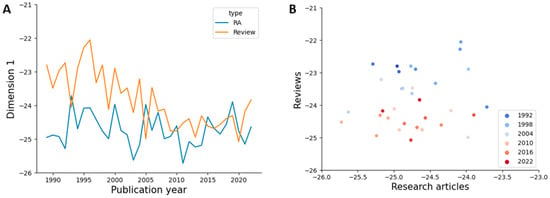
Figure 1
Open AccessFeature PaperArticle
Going Open Access: The Attitudes and Actions of Scientific Journal Editors in China
by
Wenqi Fu, Jie Xu, Qing Fang, Jingjia Ding and Hanqing Ma
Publications 2024, 12(1), 1; https://0-doi-org.brum.beds.ac.uk/10.3390/publications12010001 - 22 Dec 2023
Abstract
This study aims to investigate the attitudes and actions of scientific journal editors in China towards open access. Semi-structured interviews were conducted with 17 Chinese editors from various scientific journals during September and October of 2022. The results indicate that the editors generally
[...] Read more.
This study aims to investigate the attitudes and actions of scientific journal editors in China towards open access. Semi-structured interviews were conducted with 17 Chinese editors from various scientific journals during September and October of 2022. The results indicate that the editors generally possess knowledge of open access and have implemented an appropriate open access model for their respective journals. However, the Chinese-language journal editors expressed a lack of motivation to adopt open access, unless there is a reform in the mechanism of academic publishing or a policy is imposed. On the other hand, the English-language journal editors acknowledged that they have no other choice but to adopt open access. This study helps us learn about Chinese editors’ understanding and attitudes towards open access, the current status of open access in China’s scientific journals, and the mechanisms of academic publishing in China.
Full article
(This article belongs to the Special Issue Measuring Open Access Uptake: Databases, Metrics, and International Comparisons)
►▼
Show Figures
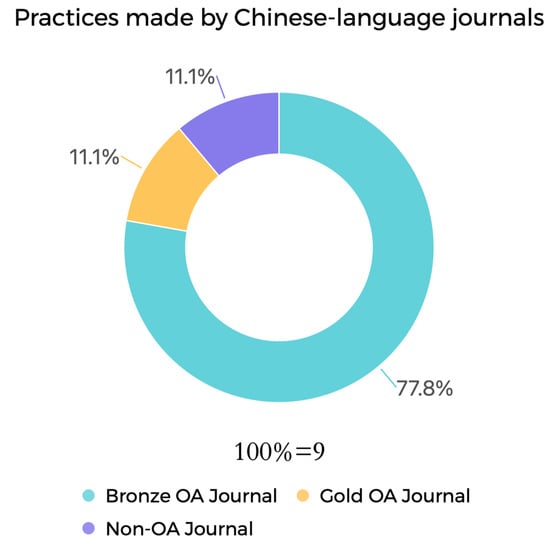
Figure 1
Open AccessCorrection
Correction: Heuritsch, J. Reflexive Behaviour: How Publication Pressure Affects Research Quality in Astronomy. Publications 2021, 9, 52
by
Julia Heuritsch
Publications 2023, 11(4), 52; https://0-doi-org.brum.beds.ac.uk/10.3390/publications11040052 - 11 Dec 2023
Abstract
The author was responsible for these errors in the original publication [...]
Full article
Open AccessArticle
Dominant Characteristics of Subject Categories in a Multiple-Category Hierarchical Scheme: A Case Study of Scopus
by
Eungi Kim and Da-Yeong Jeong
Publications 2023, 11(4), 51; https://0-doi-org.brum.beds.ac.uk/10.3390/publications11040051 - 08 Dec 2023
Abstract
►▼
Show Figures
The Scopus journal classification method, known as All Science Journal Classification (ASJC), follows a hierarchical organization of subject categories: minor, major, and supergroups. At the minor level, journals are assigned to one or more subject categories. We refer to this classification scheme as
[...] Read more.
The Scopus journal classification method, known as All Science Journal Classification (ASJC), follows a hierarchical organization of subject categories: minor, major, and supergroups. At the minor level, journals are assigned to one or more subject categories. We refer to this classification scheme as a multiple-category hierarchical scheme. The objective of this study is to investigate the dominant characteristics of subject categories within the Scopus database and quantify their dominance using various subject indices. To conduct the study, we formulated a set of subject category indices, including the Number of Journals (J), Total Instances of Subject Categories (SC), Number of Unique Subject Categories (USC), and Dominance Index (DOMI). The results showed that high DOMI values in subject categories indicate specialization and limited associations with other fields. There were minimal correlations between DOMI and other subject category indices like J, SC, and USC, demonstrating their uniqueness and independence. The study also revealed that subject categories within the Health Sciences exhibited higher DOMI values and greater specialization compared to those in the Physical Sciences, indicating a pronounced dominance in Health Sciences minor categories. Finally, minor subject categories exhibited more variation in subject category indices compared to their upper-level subject categories, highlighting the intricate variations within the hierarchical system of the Scopus classification. These findings have implications for researchers, emphasizing the need to consider a subject category’s dominance and associations when selecting journals for their research.
Full article
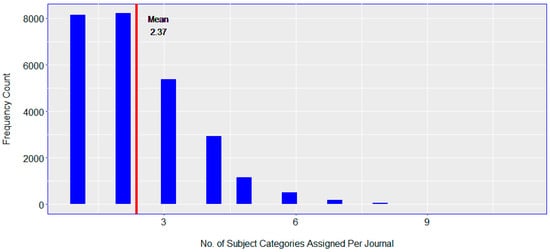
Figure 1
Open AccessReview
Options in the (Semi-)Periphery: A Review of Multilingual Scholars’ Choices of Topics, Methodologies, and Theories in Research and Publishing
by
Xiatinghan Xu
Publications 2023, 11(4), 50; https://0-doi-org.brum.beds.ac.uk/10.3390/publications11040050 - 21 Nov 2023
Abstract
In most global contexts, academic publishing plays an essential part of scholars’ professional lives. For multilingual scholars, who may use multiple languages and publish for different communities, publishing can entail making a range of important choices. To date, while there has been a
[...] Read more.
In most global contexts, academic publishing plays an essential part of scholars’ professional lives. For multilingual scholars, who may use multiple languages and publish for different communities, publishing can entail making a range of important choices. To date, while there has been a substantial amount of research on multilingual scholars’ choices of language and genre, little has focused on their choices of topics, methodologies, and theories, which are also important aspects of their research and publishing practices. In this review article, I explore specifically what the extant research has found about why multilingual scholars make particular choices of topics, methodologies, and theories outside of Anglophone contexts. Reviewing research published between 2004 and 2023, I found that overall, scholars’ choices in such aspects are motivated by their desire for professional success and their aims of making academic and social contributions. Also, their choices can be further complicated by various sociopolitical factors. I argue that the current strand of research mainly focuses on the neoliberal contexts of publishing and the effects of Anglophone academia on global knowledge production, whereas the practices of multilingual scholars outside the Anglosphere can be also affected by many other factors that have received less attention.
Full article
Open AccessFeature PaperArticle
Migrating 120,000 Legacy Publications from Several Systems into a Current Research Information System Using Advanced Data Wrangling Techniques
by
Yrjö Lappalainen, Matti Lassila, Tanja Heikkilä, Jani Nieminen and Tapani Lehtilä
Publications 2023, 11(4), 49; https://0-doi-org.brum.beds.ac.uk/10.3390/publications11040049 - 14 Nov 2023
Abstract
►▼
Show Figures
This article describes a complex CRIS (current research information system) implementation project involving the migration of around 120,000 legacy publication records from three different systems. The project, undertaken by Tampere University, encountered several challenges in data diversity, data quality, and resource allocation. To
[...] Read more.
This article describes a complex CRIS (current research information system) implementation project involving the migration of around 120,000 legacy publication records from three different systems. The project, undertaken by Tampere University, encountered several challenges in data diversity, data quality, and resource allocation. To handle the extensive and heterogenous dataset, innovative approaches such as machine learning techniques and various data wrangling tools were used to process data, correct errors, and merge information from different sources. Despite significant delays and unforeseen obstacles, the project was ultimately successful in achieving its goals. The project served as a valuable learning experience, highlighting the importance of data quality and standardized practices, and the need for dedicated resources in handling complex data migration projects in research organizations. This study stands out for its comprehensive documentation of the data wrangling and migration process, which has been less explored in the context of CRIS literature.
Full article
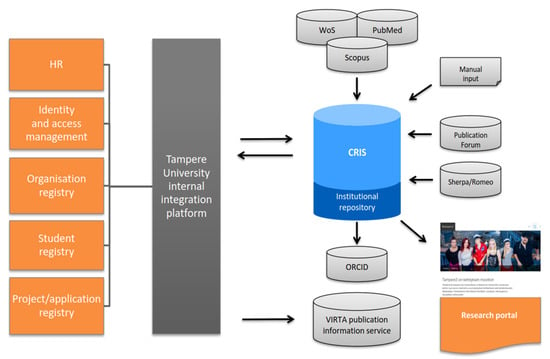
Figure 1
Open AccessArticle
Mapping Two Decades of Research Productivity in the Middle Eastern and Arab Countries: A Comprehensive Bibliometric Analysis
by
Latefa Ali Dardas, Ahmad M. A. Malkawi, Sami Sweis, Nadia Sweis, Amjad Al-Khayat and Faleh A. Sawair
Publications 2023, 11(4), 48; https://0-doi-org.brum.beds.ac.uk/10.3390/publications11040048 - 10 Oct 2023
Cited by 1
Abstract
Middle Eastern and Arab countries have been experiencing significant advancements in scientific research and development over the past few decades. Understanding the trends, patterns, and impact of research within this region can provide valuable insights into its scientific landscape, identify areas of strength,
[...] Read more.
Middle Eastern and Arab countries have been experiencing significant advancements in scientific research and development over the past few decades. Understanding the trends, patterns, and impact of research within this region can provide valuable insights into its scientific landscape, identify areas of strength, and uncover potential areas for improvement. This study presents a comprehensive bibliometric analysis of research productivity in the Middle Eastern and Arab region over a 20-year period. The findings revealed a consistent increase in research productivity, yet mapped significant disparities between countries in scholarly output, excellence, and impact. Adjusting for population size and GDP, Iran displayed the highest publication activity, trailed by Egypt and Turkey. Delving into the distribution of research output across different journal quartiles, the results revealed that this region has a lower percentage of scholarly output published in high-impact journals (both the top 10% and the top 25% categories). Compared to North America and the European Union, the Middle Eastern and Arab region consistently exhibited lower performance in terms of top 10% citations, average citations per publication, and field-weighted citation impact. The field of physical sciences took the lead as the most prevalent subject area in the Middle Eastern and Arab region, comprising about 60.5% of the research emphasis. Conversely, social sciences garnered comparatively less research attention, making up approximately 8.9% of the focus. The region showed strong international collaboration levels (40.5%), yet relatively low national (24.4%) and academic–corporate collaborations (1.5%). The outcomes of this study can facilitate international comparisons and benchmarking, allowing Middle Eastern and Arab countries to position themselves within the global scientific community. There remains a need to prioritize quality over quantity by emphasizing rigorous research practices and collaboration. An ongoing evaluation of research performance using a combination of indicators can help track progress and adjust strategies as needed.
Full article
(This article belongs to the Special Issue Looking Forwards and Backwards: 10 Years of Publications)
►▼
Show Figures
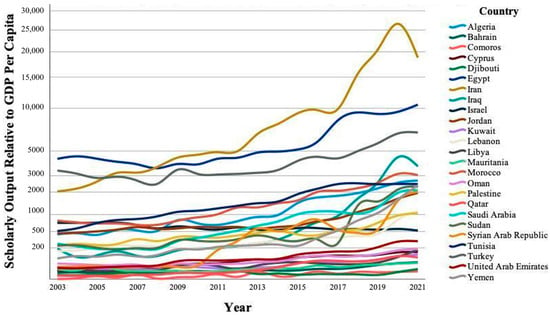
Figure 1
Open AccessFeature PaperArticle
Some Insights into the Factors Influencing Continuous Citation of Retracted Scientific Papers
by
Bor Luen Tang
Publications 2023, 11(4), 47; https://0-doi-org.brum.beds.ac.uk/10.3390/publications11040047 - 08 Oct 2023
Abstract
►▼
Show Figures
Once retracted, the citation count of a research paper might be intuitively expected to drop precipitously. Here, we assessed the post-retraction citation of life and medical sciences papers from two top-ranked, multidisciplinary journals Nature and Science, from 2010 to 2018. Post-retraction citations
[...] Read more.
Once retracted, the citation count of a research paper might be intuitively expected to drop precipitously. Here, we assessed the post-retraction citation of life and medical sciences papers from two top-ranked, multidisciplinary journals Nature and Science, from 2010 to 2018. Post-retraction citations accounted for a staggering 47.7% and 40.9% of total citations (median values), respectively, of the papers included in our analysis. These numbers are comparable with those from two journals with lower impact factors, and with retracted papers from the physical sciences discipline. A more qualitative assessment of five papers from the two journals with a high percentage (>50%) of post-retraction citations, all of which are associated with misconduct, reveal different contributing reasons and factors. Retracted papers associated with highly publicized misconduct cases are more prone to being cited with the retraction status indicated, or projected negatively (such as in the context of research ethics and misconduct discussions), with the latter also indicated by cross-disciplinary citations by humanities and social sciences articles. Retracted papers that retained significant validity in their main findings/conclusions may receive a large number of neutral citations that are somewhat blind to the retraction. Retracted papers in popular subject areas with massive publication outputs, particularly secondary publications such as reviews, may also have a high background citation noise. Our findings add further insights to the nature of post-retraction citations beyond the plain notion that these are largely made through sheer ignorance or negligence by the citing authors.
Full article
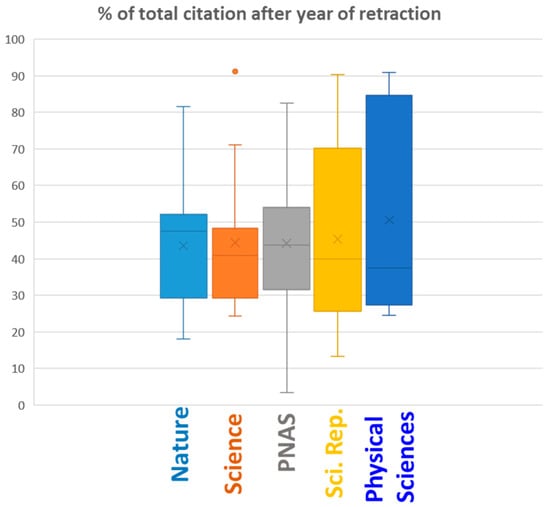
Figure 1
Open AccessArticle
Determining the Characteristics of Papers That Garner the Most Significant Impact: A Deep Dive into Mexican Engineering Publications
by
Claudia N. Gonzalez Brambila, José I. Ponce, Silvia B. Gonzalez Brambila and Matias F. Milia
Publications 2023, 11(4), 46; https://0-doi-org.brum.beds.ac.uk/10.3390/publications11040046 - 26 Sep 2023
Abstract
►▼
Show Figures
Engineers make things, make things work, and make things work better and easier. This kind of knowledge is crucial for innovation, and much of the explicit knowledge developed by engineers is embodied in scientific publications. In this paper, we analyze the evolution of
[...] Read more.
Engineers make things, make things work, and make things work better and easier. This kind of knowledge is crucial for innovation, and much of the explicit knowledge developed by engineers is embodied in scientific publications. In this paper, we analyze the evolution of publications and citations in engineering in a middle-income country such as Mexico. Using a database of all Mexican publications in Web of Science from 2004 to 2017, we explore the characteristics of publications that tend to have the greatest impact; this is the highest number of citations. Among the variables studied are the type of collaboration (no collaboration, domestic, bilateral, or multilateral), the number of coauthors and countries, controlling for a coauthor from the USA, and the affiliation institution of the Mexican author(s). Our results emphasize the overall importance of joint international efforts and suggest that publications with the highest number of citations are those with multinational collaboration (coauthors from three or more countries) and when one of the coauthors is from the USA. Another interesting result is that single-authored papers have had a higher impact than those written through domestic collaboration.
Full article
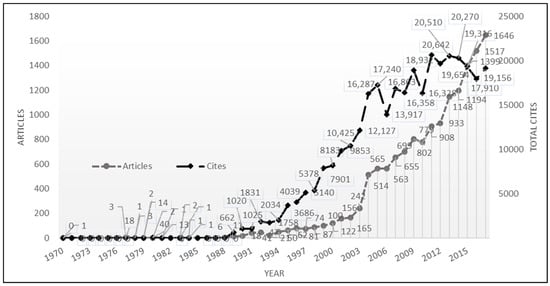
Figure 1
Open AccessCommunication
Children of AI: A Protocol for Managing the Born-Digital Ephemera Spawned by Generative AI Language Models
by
Dirk H. R. Spennemann
Publications 2023, 11(3), 45; https://0-doi-org.brum.beds.ac.uk/10.3390/publications11030045 - 21 Sep 2023
Cited by 1
Abstract
The recent public release of the generative AI language model ChatGPT has captured the public imagination and has resulted in a rapid uptake and widespread experimentation by the general public and academia alike. The number of academic publications focusing on the capabilities as
[...] Read more.
The recent public release of the generative AI language model ChatGPT has captured the public imagination and has resulted in a rapid uptake and widespread experimentation by the general public and academia alike. The number of academic publications focusing on the capabilities as well as practical and ethical implications of generative AI has been growing exponentially. One of the concerns with this unprecedented growth in scholarship related to generative AI, in particular, ChatGPT, is that, in most cases, the raw data, which is the text of the original ‘conversations,’ have not been made available to the audience of the papers and thus cannot be drawn on to assess the veracity of the arguments made and the conclusions drawn therefrom. This paper provides a protocol for the documentation and archiving of these raw data.
Full article
(This article belongs to the Topic AI Chatbots: Threat or Opportunity?)
►▼
Show Figures

Figure 1
Open AccessFeature PaperArticle
Promoting Open Access in Research-Performing Organizations: Spheres of Activity, Challenges, and Future Action Areas
by
Heinz Pampel
Publications 2023, 11(3), 44; https://0-doi-org.brum.beds.ac.uk/10.3390/publications11030044 - 20 Sep 2023
Abstract
►▼
Show Figures
Open access (OA) has become a critical issue in science policy and affects a wide range of activities in universities and research labs. Research-performing organizations (RPOs), defined as publicly funded universities and research institutions, face significant challenges in shaping the OA transformation. This
[...] Read more.
Open access (OA) has become a critical issue in science policy and affects a wide range of activities in universities and research labs. Research-performing organizations (RPOs), defined as publicly funded universities and research institutions, face significant challenges in shaping the OA transformation. This article examines the spheres of activity available to RPOs for shaping the OA transformation, using a categorization of 22 spheres of activity related to OA. These spheres of activity include strategy and communication, services and infrastructures, business relationships with publishers, and collaborations. Current challenges and future action areas in promoting OA are also described, providing support for RPOs in handling OA and highlighting key issues. The categorization can serve as a tool for systematically assessing OA activities at RPOs and shows that OA is a cross-cutting issue in these organizations. Collaboration on OA activities, both within and beyond organizations, presents a challenge. To effectively promote OA, it is crucial to strengthen the interaction between funding agencies and RPOs. Libraries are critical stakeholders, playing a vital role in advancing OA at the local, national, and international levels in partnership with RPO management and other partners in faculty, administration, and information technology.
Full article

Figure 1
Highly Accessed Articles
Latest Books
E-Mail Alert
News
Topics
Topic in
AI, Algorithms, BDCC, Future Internet, Informatics, Information, Languages, Publications
AI Chatbots: Threat or Opportunity?
Topic Editors: Antony Bryant, Roberto Montemanni, Min Chen, Paolo Bellavista, Kenji Suzuki, Jeanine Treffers-DallerDeadline: 30 April 2024

Conferences
Special Issues
Special Issue in
Publications
Diamond Open Access
Guest Editor: Niels TaubertDeadline: 10 October 2024



